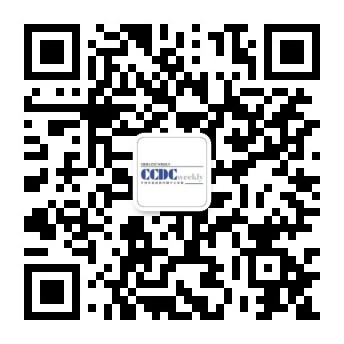This study provides a comprehensive analysis of human papillomavirus (HPV) vaccination coverage in China from 2017 to 2022, highlighting significant progress alongside notable gaps in vaccine utilization among females aged 9–45 years. Utilizing data from the China Immunization Information System, the study unveils an increase in HPV vaccine administration, with total doses rising from 44,000 in 2017 to 47,266,000 in 2022. However, despite this upward trend, the coverage rates remain considerably below global averages and WHO targets. By 2022, first-dose coverage stood at only 10.15%, with full-series coverage at 6.21%, underscoring notable disparities between different age groups and regions. The highest coverage was observed in the eastern provincial-level administrative divisions (PLADs), while the western PLADs lagged behind. The study attributes low national coverage rates to the HPV vaccine's exclusion from China's National Immunization Program leading to non-program-based availability and imposing financial burdens on families. The research underscores the necessity of incorporating the HPV vaccine into the National Immunization Program and implementing routine vaccination across multiple age cohorts. This approach aims to enhance coverage, reduce regional disparities, and ensure equitable access, aligning with WHO's goal of eliminating cervical cancer as a public health problem by 2030. The findings call for urgent action to increase HPV vaccine coverage, particularly among younger females, to achieve herd immunity and significantly reduce cervical cancer incidence.
For more information: https://weekly.chinacdc.cn/en/article/doi/10.46234/ccdcw2024.080
Coverage of the Combined DTaP-IPV/Hib Vaccine Among Children Aged 2–18 Months — 9 PLADs, China, 2019–2021
A comprehensive study spanning 2019 to 2021 found that the use of the pentavalent vaccine (DTaP-IPV/Hib) in China has significantly increased, indicating a rise in preference for combination vaccines that protect against multiple diseases with fewer injections. The study analyzed data from nine Chinese provincial-level administrative divisions (PLADs), highlighting a progressive annual boost in the number of doses administered, coverage rates, and the replacement of single vaccines with the pentavalent version. Regional disparities were apparent, with the eastern region leading in usage and coverage, while rural areas lagged behind their urban counterparts, albeit with narrowing differences over time. Higher coverage in urban areas reflects parental willingness to pay out-of-pocket for the combined vaccine, despite its absence from the National Immunization Program and associated costs. The findings suggest a growing trend towards the use of combination vaccines like the pentavalent, offering convenience and potentially enhancing vaccine adherence. The study underscores the need for policies that could reduce regional and urban-rural disparities and supports the cost-effectiveness of combination vaccines for possible inclusion in national vaccination programs.
For more information: https://weekly.chinacdc.cn/en/article/doi/10.46234/ccdcw2024.083
Comparison of 1 Versus 2 Doses of Quadrivalent Influenza Vaccinein 3–8-Year-Old Children with Different Immunological States — Jiangsu Province, China, 2021
A recent study conducted in Jiangsu, China evaluated the effectiveness of the quadrivalent influenza vaccine (QIV) in children aged 3-8. The study divided participants into two groups based on their prior influenza vaccination history: those previously vaccinated (Group A) and those with no vaccination history (Group B). Participants received two doses of QIV, and antibody responses were measured at various intervals. The QIV, targeting four influenza virus strains, showed varying effects based on prior vaccination history. Group A exhibited a robust response after the first dose, but no significant additional benefits from the second dose. In contrast, Group B showed significant antibody increases after both doses, indicating the importance of a two-dose regimen for unvaccinated children. The study also highlighted the impact of baseline serostatus on vaccine efficacy, especially among seronegative individuals. Adverse reactions were mild and mostly limited to injection site pain and cough. The findings suggest that for children who have previously received influenza vaccines, a single annual dose of QIV may suffice, whereas vaccine-naive children benefit from a two-dose regimen, particularly for influenza B protection. This study contributes to understanding the optimal vaccination strategy for children against seasonal influenza.
For more information:https://weekly.chinacdc.cn/en/article/doi/10.46234/ccdcw2024.082
Occurrence and Reduction of Hepatitis B VaccineHesitancy Among Medical University Students — Shanxi Province, China, 2020
A comprehensive study conducted at a Chinese medical university reveals insights into hepatitis B vaccine hesitancy among university students, a pressing issue given the global public health concern posed by hepatitis B virus (HBV) infection. The World Health Organization (WHO) reports an estimated 296 million chronic hepatitis B cases worldwide in 2019, with 1.5 million new cases annually. Despite high vaccination rates among university students in China, a decline in the antibody response and high-risk behaviors like tattoos and unprotected sexual contact increase HBV infection risk. The study, involving 1,003 students from the 2017 graduating class, utilized a detailed questionnaire to assess hepatitis B-related knowledge, attitudes, and practices. Results highlighted a 19.84% vaccine hesitancy rate, correlating significantly with lower knowledge and stigmatizing attitudes towards HBV. Logistic regression and structural equation modeling showed that students with less knowledge about HBV transmission and prevention, negative attitudes towards HBV patients, and fewer health-seeking behaviors were more likely to hesitate to receive the hepatitis B vaccine. These findings underline the importance of health education in improving hepatitis B-related knowledge and attitudes as a strategy to reduce vaccine hesitancy, thus enhancing vaccination coverage among university students. The study's insights are pivotal in guiding health policy and educational initiatives, especially in university settings, to combat hepatitis B effectively.
For more information: https://weekly.chinacdc.cn/en/article/doi/10.46234/ccdcw2024.081
Times Read:



 Subscribe for E-mail Alerts
Subscribe for E-mail Alerts CCDC Weekly RSS Feed
CCDC Weekly RSS Feed

